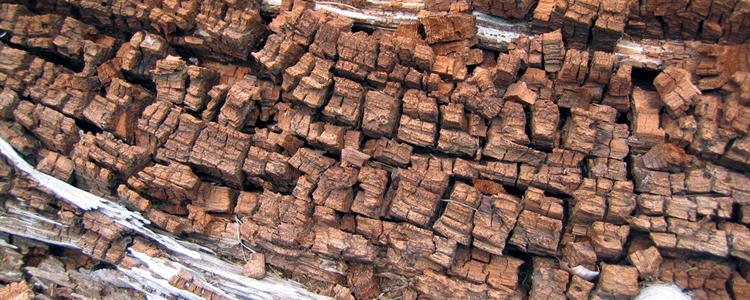As specialists in wood preservation in the Thames Valley area, we handle our fair share of cases involving both dry rot and wet rot. Customers routinely ask us if there is a difference. When we respond positively, they inevitably want to know what the difference is and how they can avoid problems in the future.
The first thing to note is that dry rot and wet rot are very different even though they can lead to the same result. You should also know that dry rot is the more serious of the two problems. Both are caused by fungus living and growing within timbers, rotting the wood along the way.
Basics of Dry Rot
Dry rot is the more serious of the two because it can expand across the entire structure. As dry rot grows, it can severely compromise a structure by creating long, deep cracks in the grain of the wood. Timbers with significant dry rot can fail without warning.
The fungus that causes dry rot grows inside the timbers by feeding on the wood itself. This kind of rot is so named because the fungus leaves behind dry, crumbly residue that falls apart at the slightest touch. Affected timbers are typically brown in colour. The fungus itself can also be brown or, in the case of being exposed to sunlight, a yellowish colour.
It is possible to have dry rot within a structure and never know it because the fungus is contained in the wood. But on occasion, fungal growth will break through wall and ceiling surfaces. If you see small growths resembling mushrooms attached your walls or ceilings, you should definitely call us right away to check for dry rot.
Basics of Wet Rot
Wet rot is more common than dry rot, but it tends to do less damage because of its propensity to remain confined. Its name is derived from the fact that the fungus that causes it requires moisture to propagate. Thus, the damage left behind is also moist rather than being dry and crumbly.
Timbers affected by wet rot will exhibit normal colour except in the area of the infestation. In that area, you may notice a black fungus on the surface of the wood. The wood itself is likely to be soft in the affected area – even spongy to the touch.
Note that wood affected by wet rot can dry out and become crumbly under the right conditions. In such a case, it may take a trained eye to know whether you are dealing with wet or dry rot. Professional treatment is highly recommended either way.
Dry Rot and Wet Rot Experts
Dry rot and wet rot are different. As such, they require different treatments. If you are at all concerned that the timbers in your home are suffering from either, please don't attempt to treat it on your own. Contact Thames Valley Timber Treatment instead. Let our trained and experienced professionals treat the infestation and restore your timbers to a safe condition.

